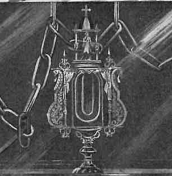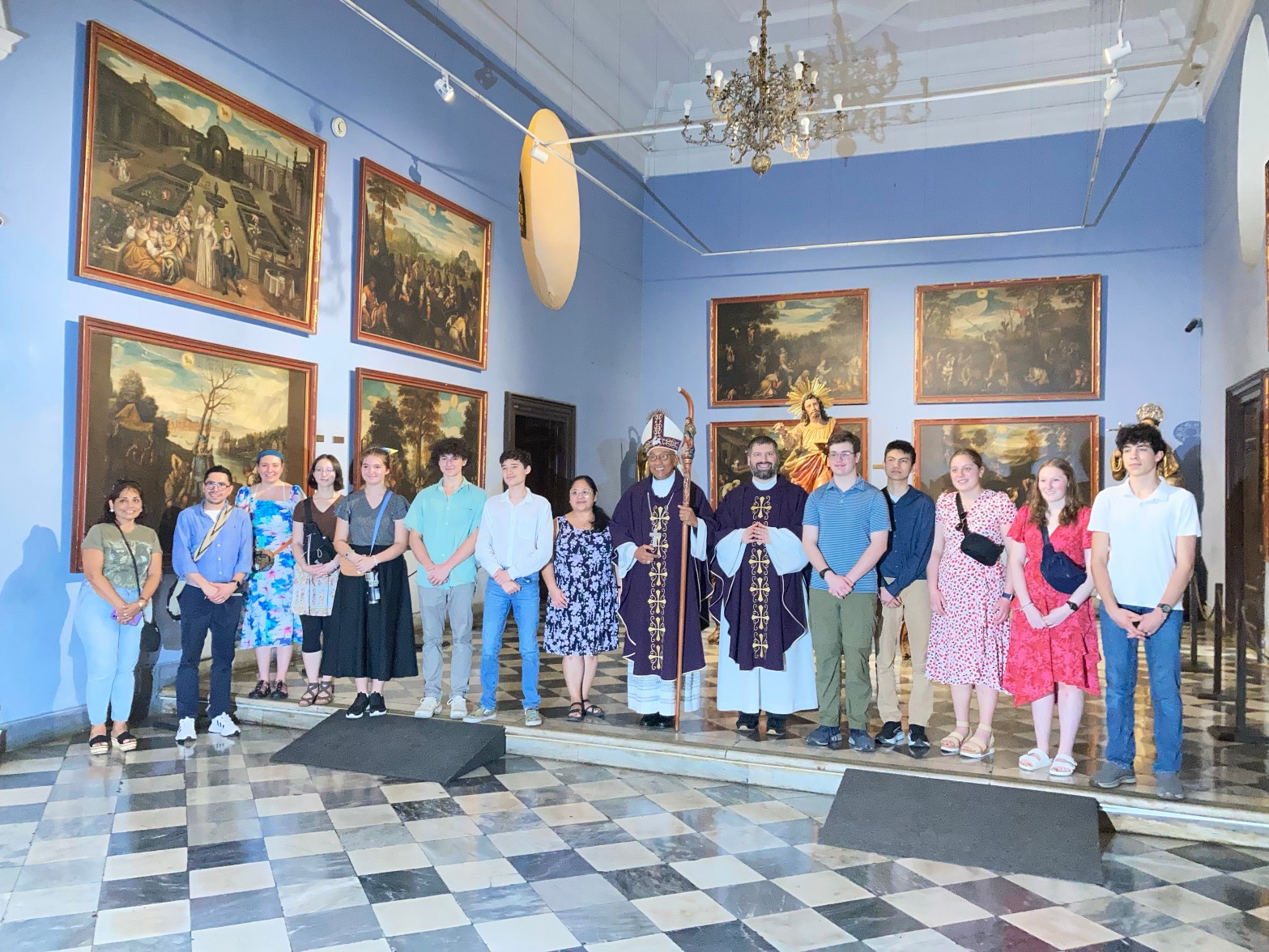Several “service trips” from Rice High School have gone to Peru in the past decades. In our 2024 (Feb. 22nd-March 3rd) service trip, our 9 Rice students, 3 chaperones, and 1 priest (yours truly), made the trek to work at two service locations. Personal accounts of mine follow. {Note: some of the inserted pictures are redundant, and not all are in exact chronological order.}





Our headquarters was a Franciscan guest house once inhabited by Saint Francis of Solano. Our service projects commenced after a day of adjustment, and a day of pilgrimage to churches. Of special note was our visit to the Cathedral in Lima. I concelebrated Sunday Mass with Bishop Guillermo Elias, Auxiliary Bishop of Lima. The Rice group was given front section seating. More about that later.

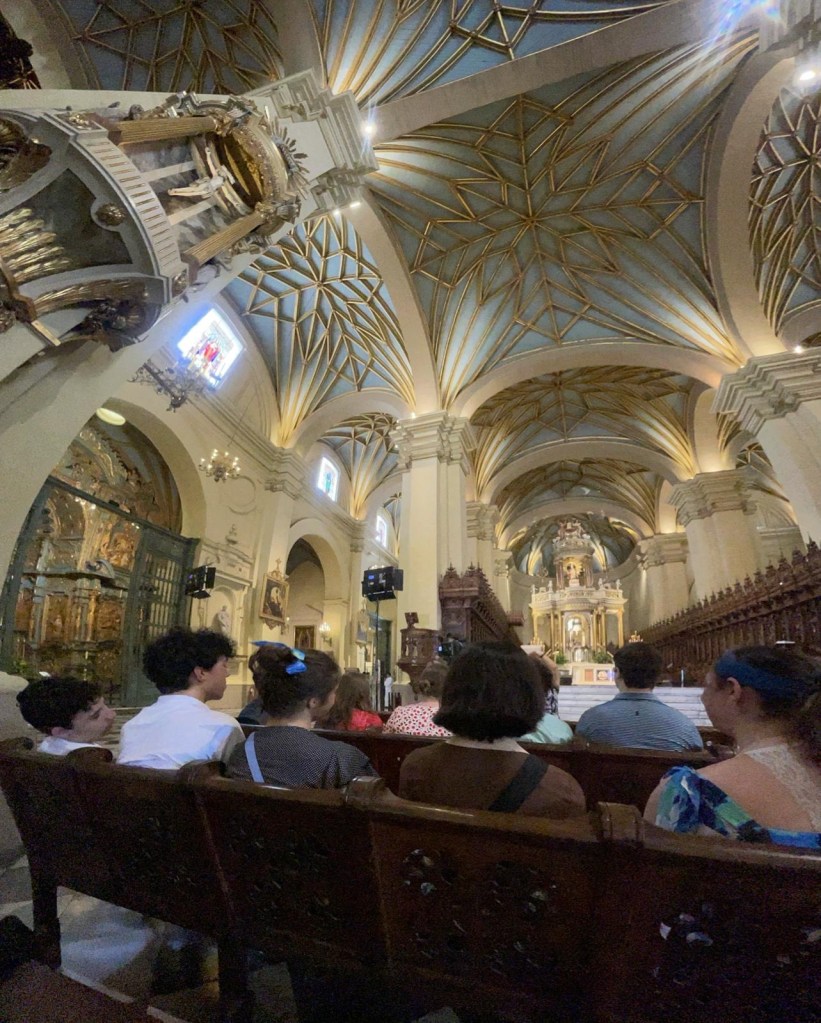


Our first service location was CIMA. CIMA is a name made by a Spanish acronym. It translates as Center for the Integration of Abandoned Minors. But CIMA has played on the same letters to propose the idea, “Center for Loving Integration of Minors.” Depending on their family situations, needy boys from the ages of 8 to 18 may live and work, study and mature, at CIMA. The home is part trade school, part reform school, part rural farm, part long term retreat, part religious community, and part sports camp. All of it is grace filled, a place of faith. {Dios Provee = God provides!}



Upon arrival, Rice students and chaperones were shown to their guest house (a building made to be one of residences for 15 to 20 boys, but currently not in use). I was shown the volunteer quarters, having one of four bedrooms connected to a small, shared kitchenette-dining room, with one bathroom and shower.
Joseph was the volunteer who showed me my room. He was an 18 year old young man from Germany who had decided to go abroad and volunteer for a year before starting his university studies. I would soon find out that his volunteer position was sponsored by a charitable foundation from Germany, that has donated money every year to CIMA. The foundation selects 15 to 20 volunteers a year to go to the locations supported through their charitable work across the globe. Joseph was a perfect fit for CIMA, given his disposition and independent volunteering aptitude, and so he was chosen from among 2000 applicants for such sponsored volunteer posts (even though he could not yet speak Spanish)! Drawing on the spot from Joseph’s recounting of his own experience, I was quickly cued into something of the adventure of volunteering at CIMA. I was not altogether surprised when I was asked if I could celebrate Mass that afternoon at 5:30 PM. But Joseph was surprised that this request had been made of me within 30 minutes of having arrived, no more notice than two hours for the Mass. He shared his recollection of being handed a knife and a peeler in the kitchen, in his very first day of volunteering, sitting in front of a bunch of vegetables hardly 20 minutes from having shown up. CIMA is not a place where the volunteers who step on to the campus are given an extensive interview so as to sort out the best ways that they might be able to help. Nor is there an extensive orientation which explains how everything works and what kinds of things you will be asked to do. Everyone at CIMA carries on by divine providence (Dios Provee) and graciousness: the understanding that someone will step forward to do what needs to be done, even if someone else needs to show them on the spot, step by step, how to do it. Here I can note that no one needed to show me step by step how to celebrate a Mass in Spanish. So, all was good on this front.
At dinner time we walked to the serving window of the kitchen building, got generous portions of rice and vegetables, with some chicken, and went to the residential houses to eat with the boys and their house “fathers” and “mothers.” (It took me a day to realize this, that “padre” was not just a nickname for one or two of the men besides me, already used to being called “padre”=”father” – Just about every adult who lives there is called “a father” and “a mother,” madre.) A wild game of basketball capped the evening, played by necessity on a soccer-field-sized basketball court. The same paved court was in fact the soccer field, and two permanent basketball hoops were very economically built above the permanent soccer goals.




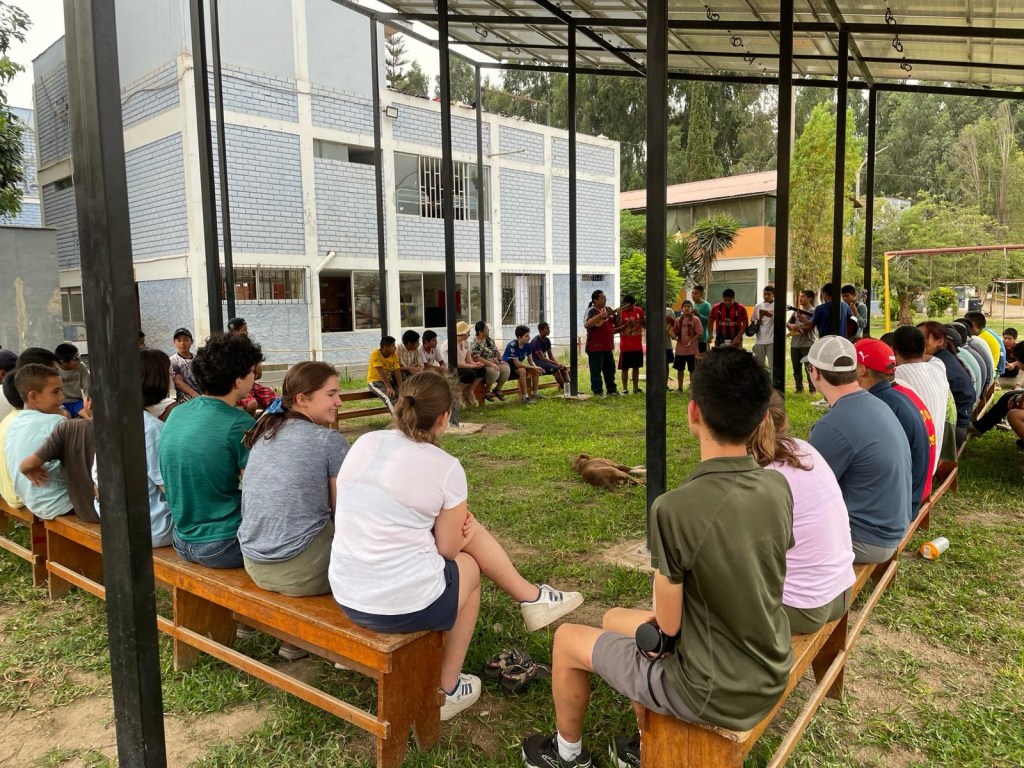
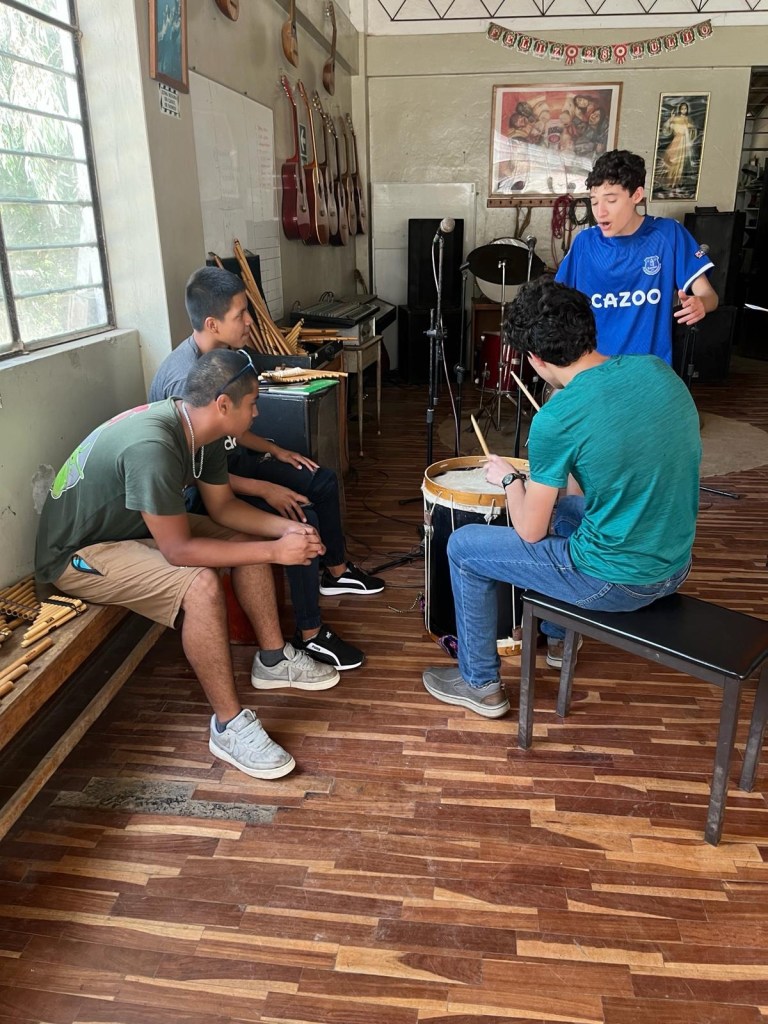
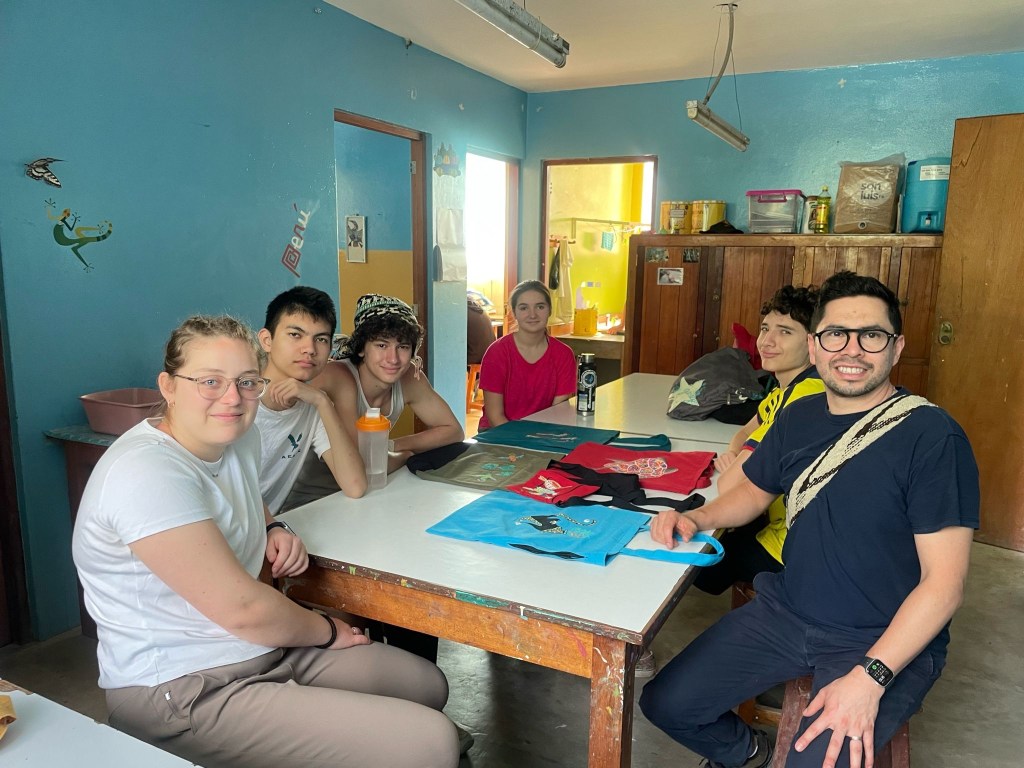






It must remain for the Rice students to describe their experience of spending time with the boys at CIMA, in our full day of service. They joined in music practice. They joined in quiet sessions of summer math practice. The joined in some pick-ax tilling of soil patches. All got upset stomachs from the unfamiliar foods.
One story to recount is from having lunch with about 15 of the 10-year-old boys. After very brief exchanges – “what’s the meat here? Pig? Ok. Yes, I like the Aji. More Aji? Thank you!” – the liveliest statement was a boy asking if they were going to confession. He might have asked “can I go to confession?” I missed the exact comment, and the Madre of the house repeated the essence of it. I asked who had received their first communion. About six raised their hands. Even if the administrators could have given me a time and a place to offer confessions, only those 6 could really have done the sacrament. The house “mother” suggested that, in this case for confessions, it might be well to be utilized by “todos”… all of them!
I offered Mass at 8am both Monday and Tuesday morning. Normally they would gather and pray at 8am, for 15 to 20 minutes daily. They might have even broken out the guitars and instruments for praise and worship as a normal course of morning prayers, just as they did for some of the Mass music. The director of CIMA was very happy to have Mass, using just a bit more of the time. The Founder of CIMA, Padre Jean-Louis, was happy to connect extra worship hymns, via a projector with the lyrics.
Here I’ll share just a few stories about offering Masses at CIMA. First of all, I had to make a quick study of the prayers that everyone knew and didn’t know. I was greatly relieved, for example, to know that spontaneous prayers of the faithful from the congregation were already “par for the course” at CIMA. When invited, six or seven boys would rattle off intentions too quickly for me to follow exactly what they were praying for. But I could happily understand the resounding harmony of voices that concluded each petition strongly with the words “we ask it of you O Lord!” Of course, they prayed the Our Father with just as much gusto during Mass. To our surprise during that Sunday Mass, as soon as the last word of the Our Father was concluded, in unison the boys all started reciting the Hail Mary, in Spanish of course. The thought flashed through my mind “ohhh, what a neat little tradition that they all add a Hail Mary in the Mass at the moment of the Lord’s Prayer.” But within three seconds my surprise had been turned to humor, as I saw Padre Jean-Louis waving off the unsanctioned addition to the Mass! It was immediately obvious that the boys were used to saying their basic Catholic prayers altogether and all in a row. They were just so much in rhythm praying the Our Father, that it didn’t occur to any of them that we were in the middle of Mass, and the Hail Mary is not automatically added every time you pray an Our Father.
I heard later that, at the same Mass, our Rice librarian was able to enjoy a moment of humor with one of the little boys sitting next to her, despite the language barrier. I had consecrated about 25 hosts, mostly broken in half, for the sake of giving communion to at least 40 people. As it turned out, only about 20 people received, and some of them had even received part of my large host broken up. So I had to spend some time at the end of communion consuming the extra consecrated hosts. Unbeknownst to me, as I later heard, the sight was very much enjoyed jointly by our Rice librarian and her little Spanish speaking buddy next to her. They had a quiet chuckle looking at each other and knowing that they shared the amusement of me chewing on cheeks full of the Eucharist during the purification.
But to come back to the Hail Mary, I knew that they all knew it in Spanish and were ready to launch into it if only prompted. This was my saving grace for the third Mass offered, since on both Sunday and Monday I had frantically flipped through the Missal to look for an appropriate prayer to conclude the prayers of the faithful. I don’t have anything memorized in Spanish for a patterned conclusion to this part of the Mass. I was relieved to realize that I could just add the Hail Mary here and get everyone’s participation. That’s exactly what I did to conclude the prayers of the faithful during our third and last Mass. I had given a homily about praying the Hail Mary and the Rosary, and I concluded the prayers of the faithful simply with “Lord Jesus we give you our petitions and we also pray to our mother, Mary.” I made sure to motion to all to sit down for the preparation of the altar, immediately as they said the last word of the Hail Mary. I knew there was a risk of a resounding Glory Be coming, out of sheer habit, if unguided by any other prompting to carry on with the Mass.
Tuesday activities between Mass and lunch were similar to the day before. In the afternoon we ate lunch, and sadly had to bid farewell to CIMA. The Rice students are brainstorming a care package to be sent to the CIMA boys at an upcoming date.
Wednesday February 28th we had a free day. Thanks to Peruvian relatives of our Rice Campus Minister, we got access to a swimming pool by the ocean shore. We hung out, swam, took pictures by the ocean, and got sunburned. We had lunch at the location, and went off shopping for souvenirs. We had an evening Mass, and prepared to go to our other service location on Thursday.


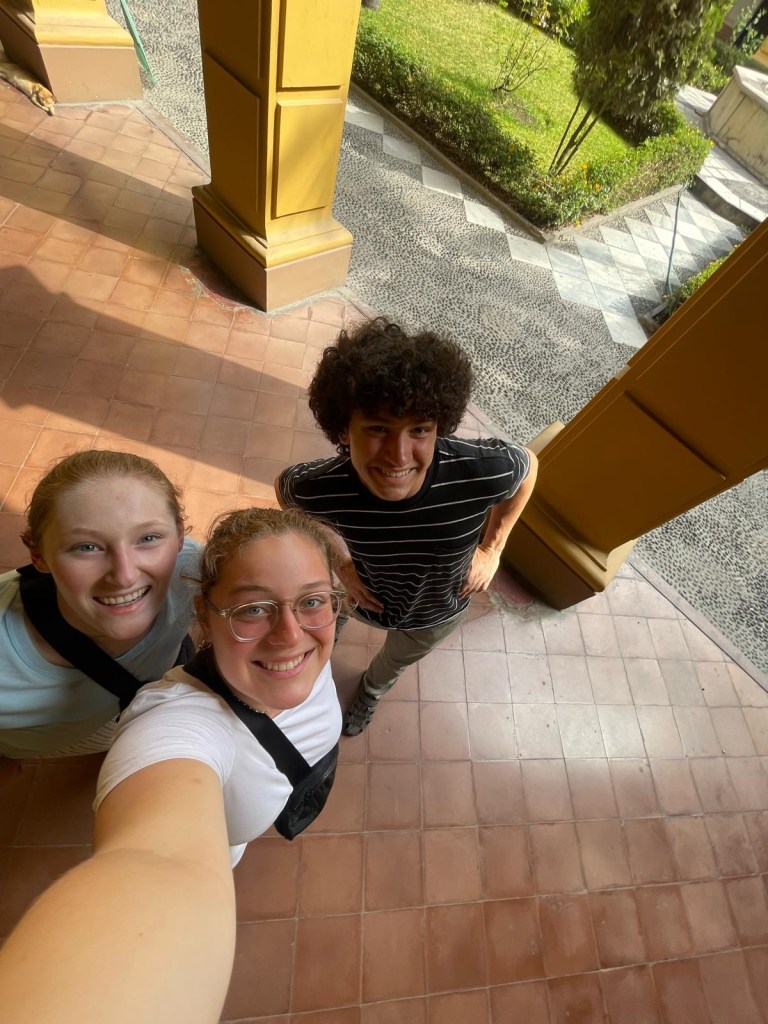


The Casa de San Martin de Porres, with the Obra Social (its “social center”), was a new service location, not previously visited by a Rice trip. We received a tour of the museum, learning of the life of St. Martin, mostly through paintings. Then all were put to work with various jobs. Some cleaned and polished woodwork in and around the museum area. Some were tasked with squeezing small lemons to stockpile the juice for lemonade making; there were other similar kitchen tasks. Some were shown the clothing room, to sort donations, clothes suitable to give away for use and clothes that needed to be thrown out. Lastly some helped sort half-used, over the counter medication piles for their pharmacy giveaway. This last group had much to wonder at… firstly as to which medications would not have been allowed to be obtained over the counter in the USA… secondly as to the degree of discretion that should be employed in describing “the time spent at Casa Saint Martin bonding over drugs.”
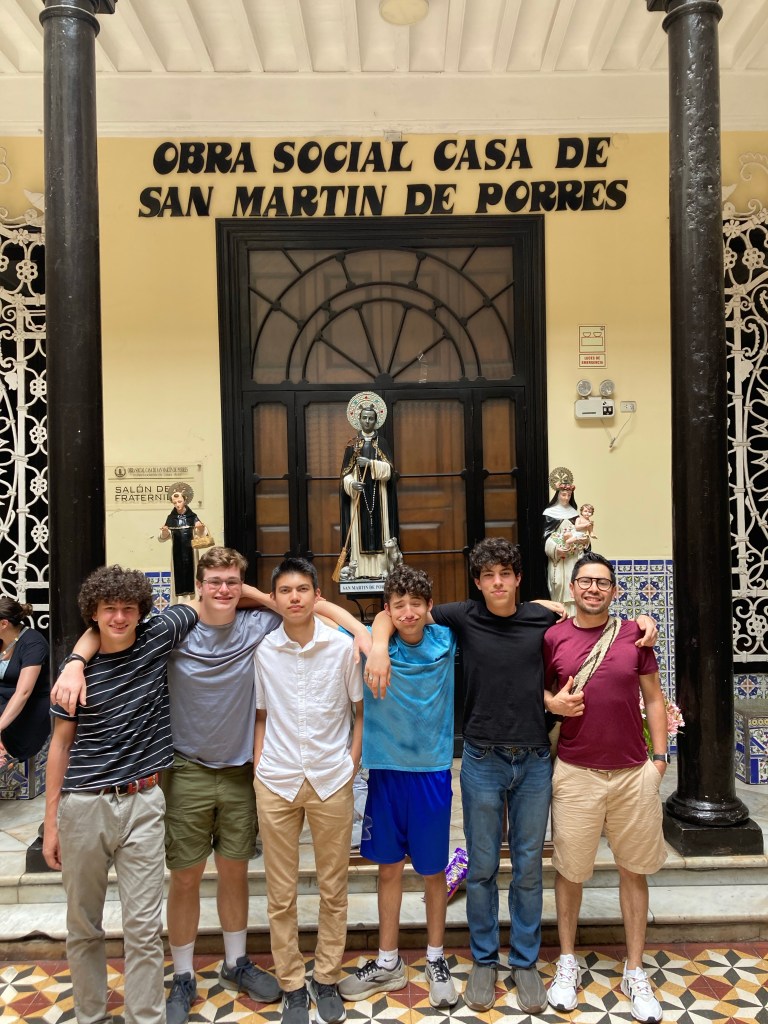
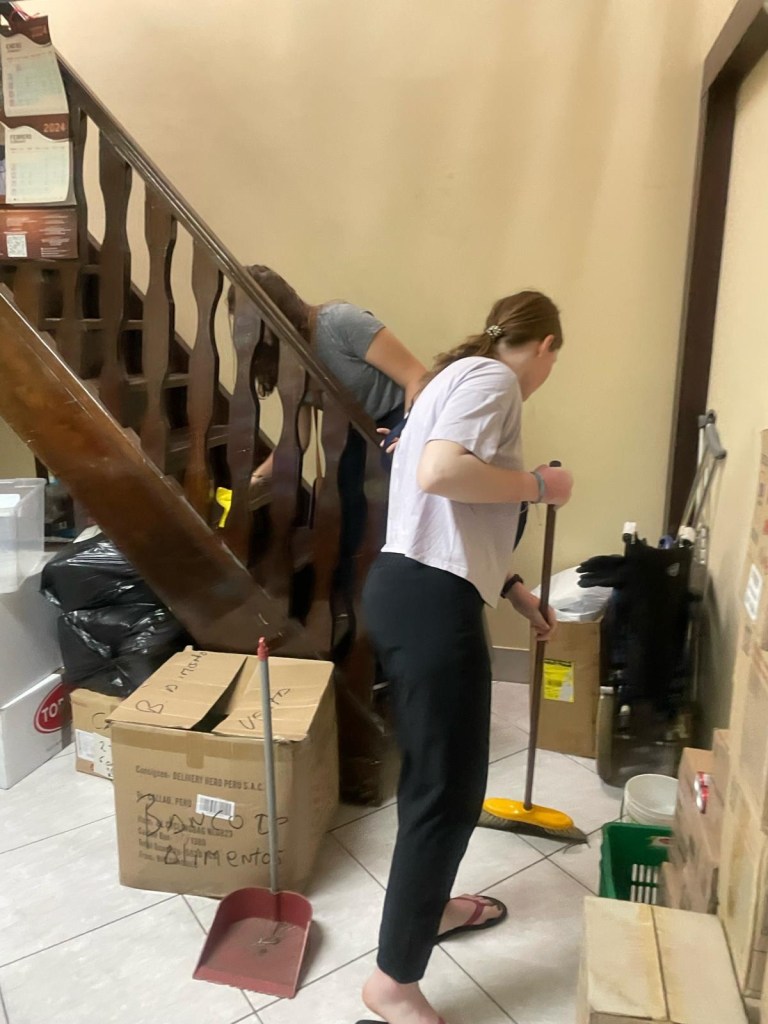

I helped serve the elderly “beneficiaries” who came to get lunch. We helped clean up, took a rest, and managed some scattered help with the above tasks in the mid-afternoon.
When serving at the Casa/House, our Rice Spanish teacher (who was obviously a valuable interpreter among our chaperones) was told that one of the workers “saw us on TV”! It seems that the Sunday Mass at the Lima Cathedral was watched by more than just a few Catholics. We should have guessed, since the livestream setup at the Cathedral had impressive lighting and camera stations. Our front row seats, and my place sitting next to the auxiliary bishop, seemed to have gotten us an hour of Peruvian TV fame.
In the afternoon I myself made almost a whole holy hour before the statue of St. Martin, at the room and shrine marking the spot he was born. In that time of prayer, I had the consoling feeling that my prayers for the intentions I had solicited from many and various people prior to the trip were in fact being “sent up” in a sufficient manner. The pilgrimage nature of our trip was present in various wonderful ways at the churches and sites in our schedule. In fact, this first day at the Obra Social of St. Martin we came to realize that this Casa is situated literally across the street from the Church of St. Rose of Lima, where on Friday we had visited, prayed, and tossed papers of written prayer intentions to the well, renowned for the very tradition of dropping such petitions. In that church we prayed particularly for Monsignor Lavalley of our diocese, since he requested prayers to St. Martin De Porres for his intentions. Monsignor’s confirmation saint, “way back when” as a grade school student, was St. Martin de Porres.




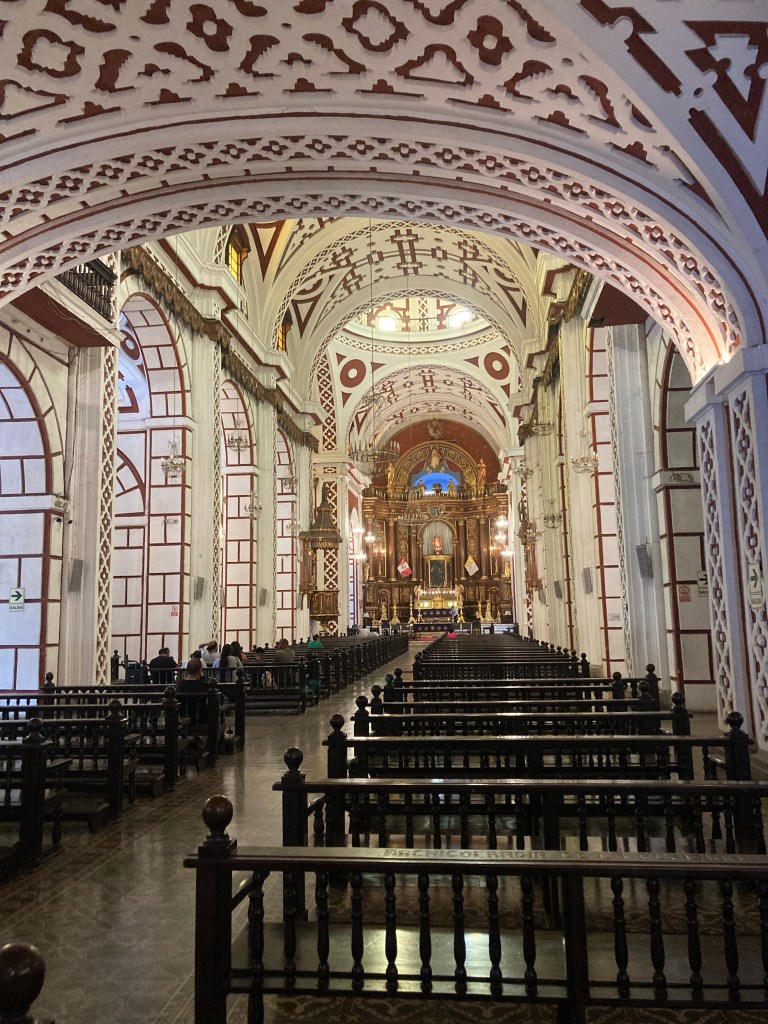

I had been asked to offer Mass at the Casa St. Martin. After the experience of CIMA, it was no big deal getting the request as of Thursday 10:00am to offer a Friday 10:00am Mass. So, after some help with Friday breakfast serving and cleanup for the beneficiaries – most of these beneficiaries were men, but both men and women came to the Obra Social for food – offer a Mass at 10:00am Friday we did.
As we had spent more time at the Casa Saint Martin, I began to look more and more for opportunities to speak with the beneficiaries. Some of the older gentlemen spoke a little English, but it was also nice that the small chit-chat of elderly folks, smiling and saying hello during a meal, is much more conducive to an intermediate Spanish speaker like me. The pace of conversation is comfortable. There is more joy in exchanging the same old pleasantries, even though it lacks the wit and exuberance of the more fast-paced conversations with youth. The manager of the gift shop was also most edified by our visit and eager to engage in bilingual conversations with me, of long and religiously themed nature. My first visit to the gift shop, in which I intended to plan a purchase of something, saw me leaving empty handed. I realized that there was little chance of browsing without getting pulled into multifaceted, bi-lingual conversations! Eventually I realized I needed to decide what I was going to buy based upon all previous “glimpse” of the religious goods I had gleaned so far. I declare the intention to complete a purchase immediately upon stepping back into the gift shop! Having successfully gotten a statue of our Lady of Guadlaupe purchased and wrapped, I could chat at ease not feeling the pressure to browse devotionals and converse at the same time.
We helped with Friday lunch, and concluded our time at the Obra Social by leaving a donation on behalf of the Catholics of Vermont. We left the Casa San Martin at 1pm.
Friday afternoon we toured the Convent of St. Dominic. Here we visited the actual crypt tombs of both St. Rose of Lima and St. Martin de Porres. Previously we had only encountered small relics of their bones in previous churches. Had we known what was there in the Convent, this location could have made the best pilgrimage location to start off with, a week prior before we started our service days. But divine providence had ensured that we got to see this location with alternate and serendipitous timing. Yes, the history of other churches in Lima would have made more sense if we had first visited the older Convent of St. Dominic; but it happened that it would have been most improbable even to know that fact if we had not shown up on the day we did, benefiting from the scarce availability of their only tour guide who presented in English… there on that day.


The Convent also had relics of Saint Juan Macias. This was the fourth Peruvian saint we came into contact with (spiritually speaking of course, since we did not actually touch his bones). We saw his miraculous basket, which would produce bread for the poor, even if it had been totally empty. His donkey was frequently shown in paintings, providing assistance with the alms-gathering. That is, when St. Juan Macias was filling up his basket in the normal and natural way, the donkey would be the enforcer of duty for the poor when willing charity was lacking in those who had means. If Saint Juan Macias knocked at the door of anyone who was capable of providing some food, they would soon hear the donkey stomping its hooves and building up to a ruckus if they did not willingly bring forth some offerings!
Our last outstanding historical puzzle of inquiry about the Peruvian saints also came from the Convento. St. Martin has lived there as a professed Dominican brother. But he was born of unwed parents, and was half African in decent (from his mother’s side). At first, he had not been allowed to be a professed Dominican, but rather a Donato/servant to the Dominicans. Our tour guide claimed that this restriction was not on account of prejudice against his African blood, but on account of his parents’ illegitimate union. But the claim was made that, somehow, his father was able to provide remedy to this illegitimacy by vouching in some manner, at some future point, as to his personal status as the father of Martin. It’s unclear as to how and why this caused the allowance for St. Martin for profession of vows as a full Dominican brother. As far as we got the story, the identities of his parents were never in question, and further, his parents never married nor received any commendations of fulfilled penitence from Church authorities… unless they did. Or, if they didn’t, it could be a testament to Martin’s own growing holiness, that Church authorities had to make the exception, to get on board with a plan that God was making completely manifest before them, through Martin’s renown and miracles and charitable deeds.
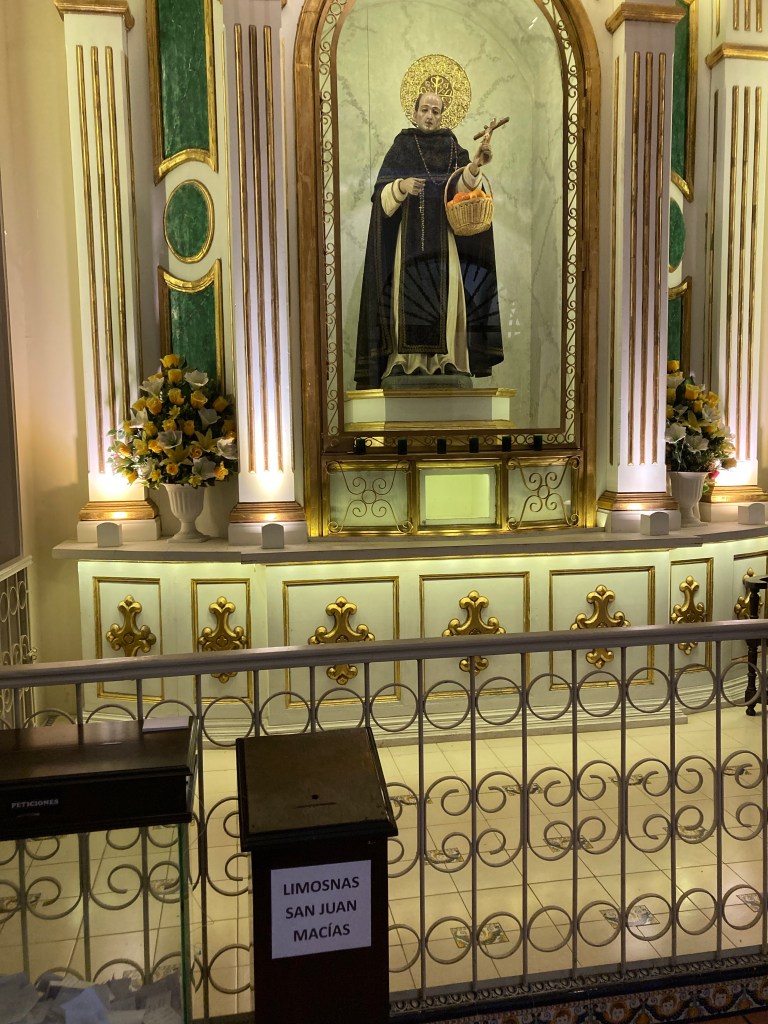



To wrap this all up, I just commend the Rice students. In all our service locations they had a sincere inclination to pay attention to the person encountered at the moment. They did in fact practice the commandment “love your neighbor as yourself.” I have told them already I hope the experience of practicing such generosity is repeated in many small ways here and now that we are back to school and back to our “normal” routines.
Praised be Jesus Christ.
In the care of the Immaculate Virgin.
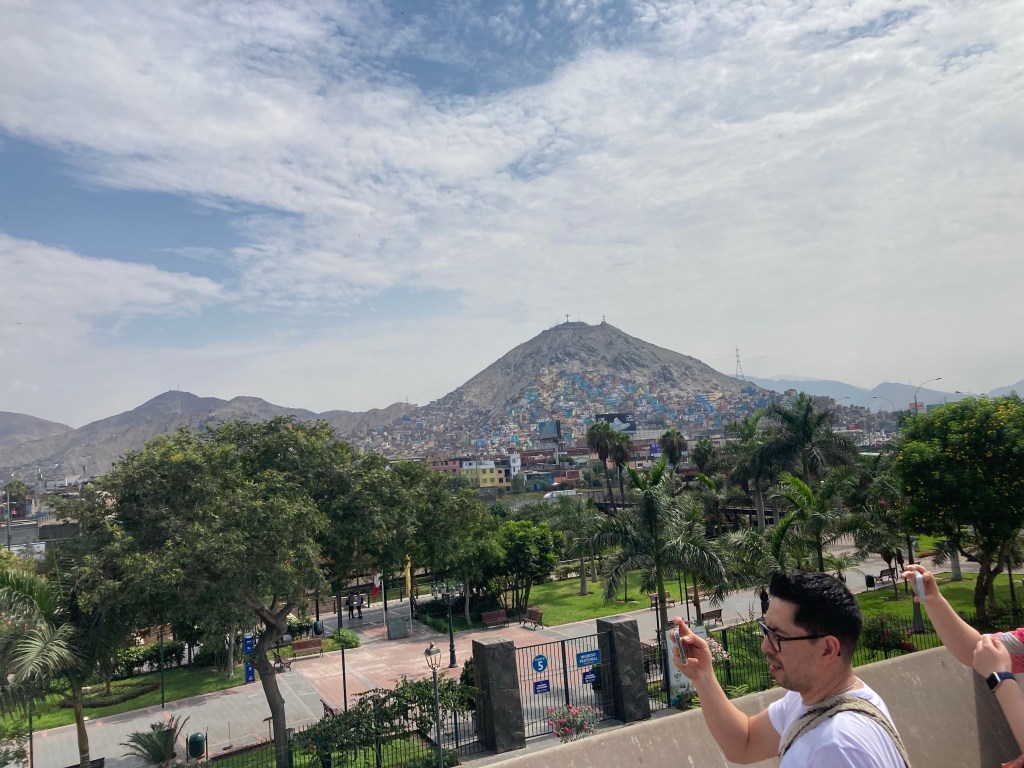




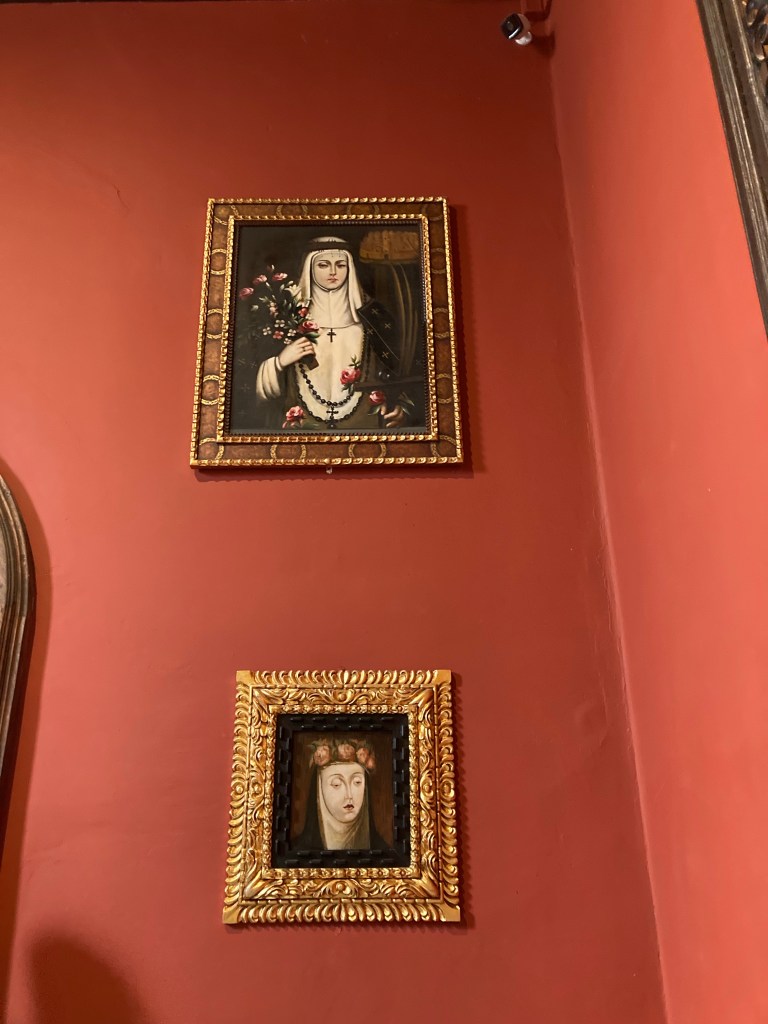
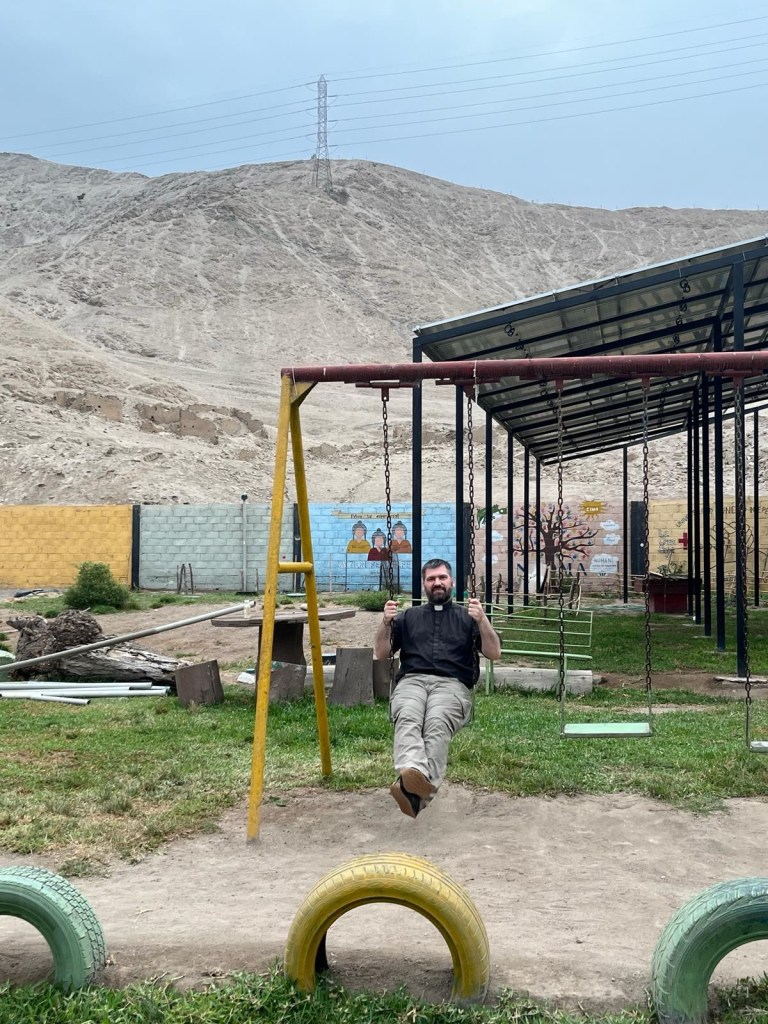
Father Timothy Naples
